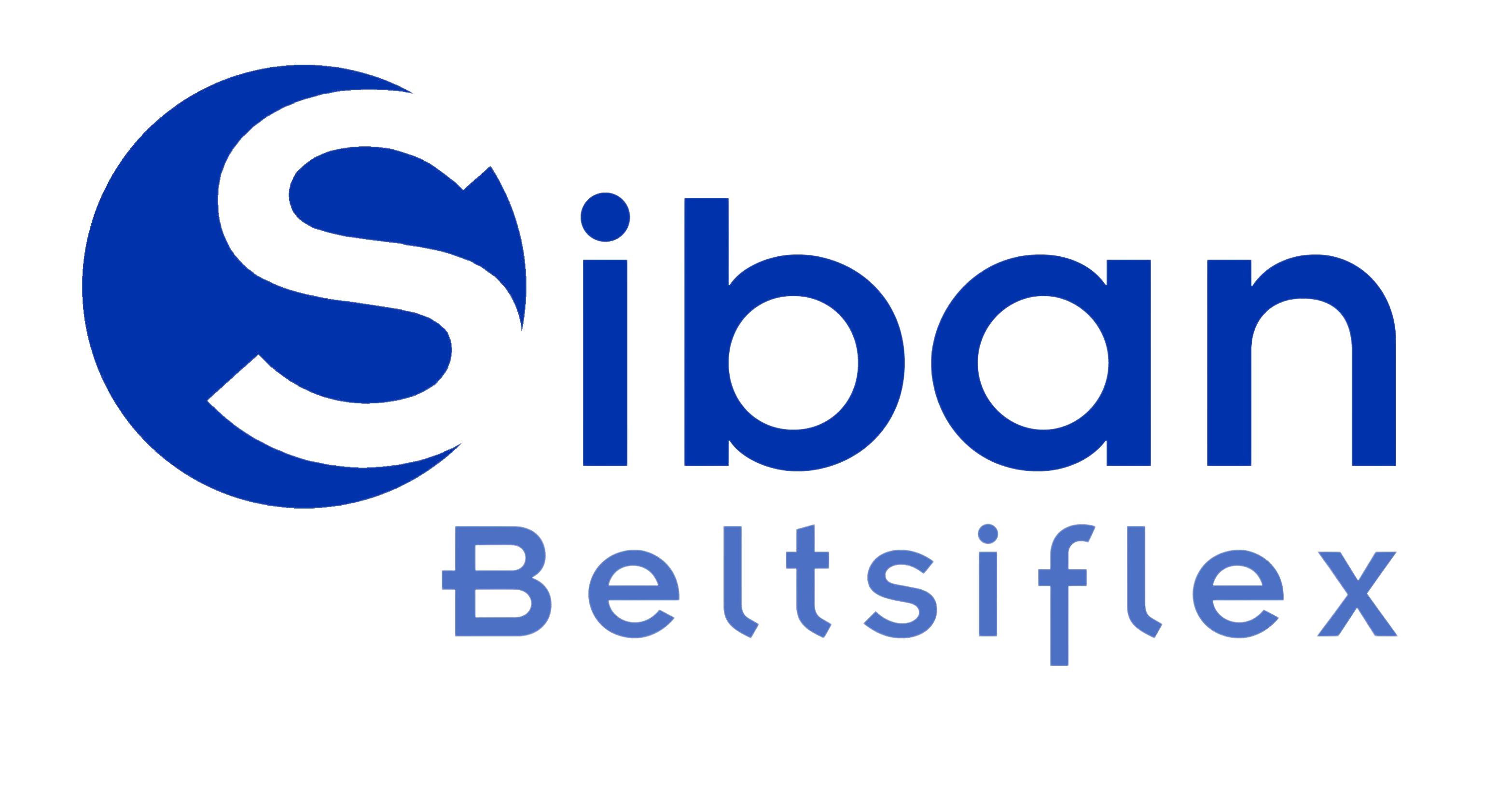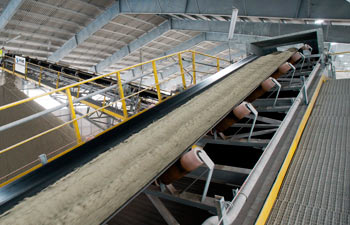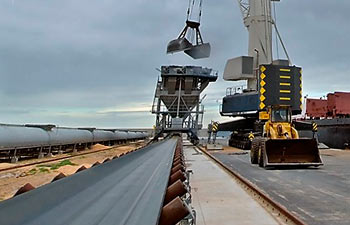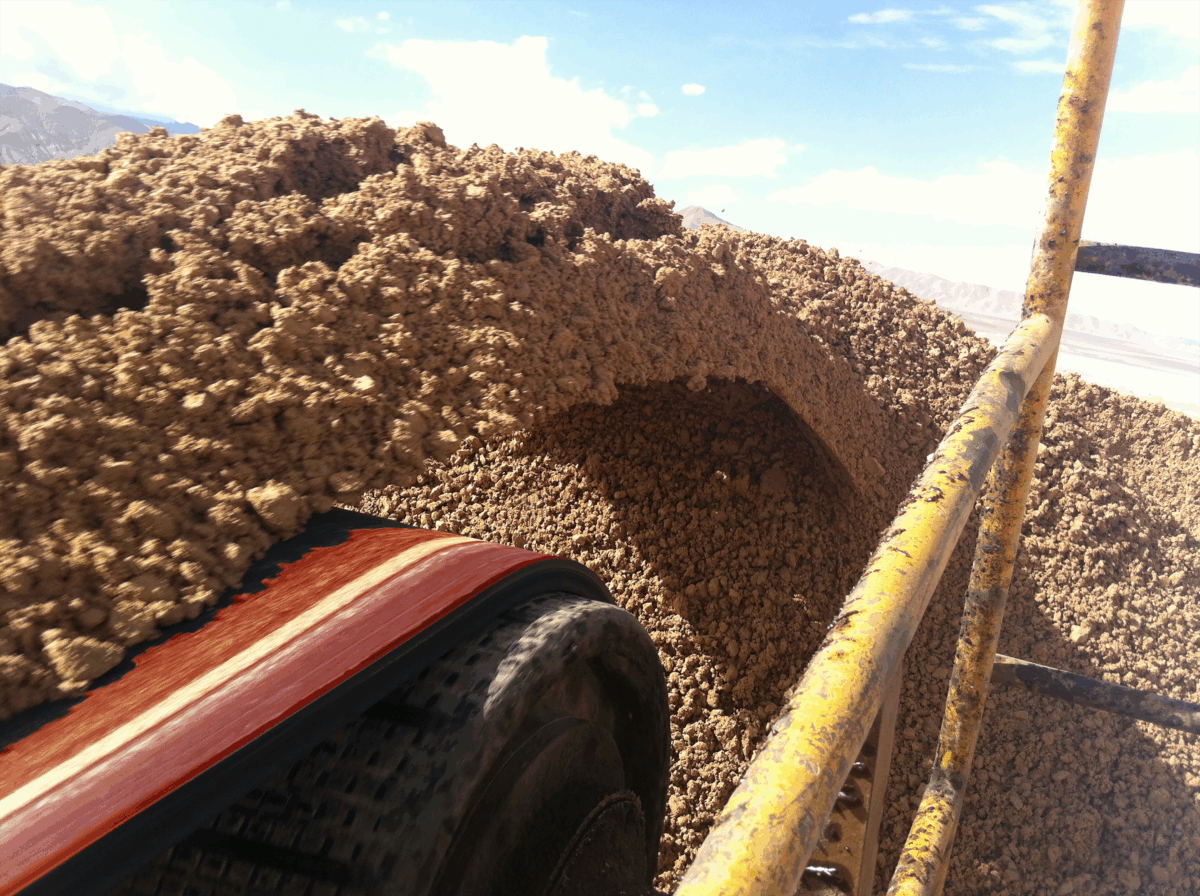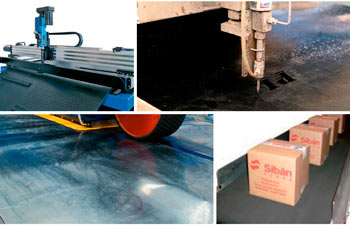Beltsiflex® Conveyor Belts
The conveyor belt is made up of a central core: carcass, and a protective coating: cover.
There are a large variety of carcasses and covers, and each one may be combined until a suitable belt is found for the application.
CARCASS
TEXTIL
The textile carcasses for conveyor belts works with different Technical fibbers like polyamide, aramid, basalt, fibber of glass or cotton in order to give the different mechanical properties required by the customers. These fibbers are weaved in different fabric under requirement. The most common weaving configurations for fabrics are Plain, Oxford, Monoply, Straight warp, Leno weave, Square.
The fabric tensile strength range is 60-800N/mm and at the same time, the carcass tensile strength range (several fabrics together) is 250-4500 N/mm. Additionally, the carcass could be reinforcement with textile breakers or metallic breakers to save the set against impacts or cut. Furthermore, the carcass could be reinforcement with polyester monofilament fabrics or metallic breakers in order to give stiff to the set.
METALLIC
The carcass is made by a set of longitudinal steel cords and its designation is ST. These belts have a great resistance against pulling and impacts and also, a very low elongation coefficient. Due to this great properties, this carcass offer great performance in long distance installations or under great efforts. Additionally, the carcass could be reinforcement with textile breakers or metallic breakers to save the set against impacts or cut. Furthermore, the carcass could be reinforcement with polyester monofilament fabrics or metallic breakers in order to give stiff to the set.
to.
The steel cord carcass range goes from 630 N/mm up to 8.000 N/mm.
COVERS
Covers are the rubber coatings that protect the belt’s carcass from damage due to impacts, from chemicals, temperature and others. They are manufactured with different rubber composition qualities, and should have a suitable thickness for covering the needs of the materials to be conveyed. They may be manufactured with different profiles on the top surface.
In accordance with international standards, the properties of rubber are determined according to the resistance of the materials to be conveyed, such as, Grease and mineral, animal and vegetable fat resistant, temperature resistant, abrasion resistant,D ame resistant, and other special properties that may be manufactured by special order.
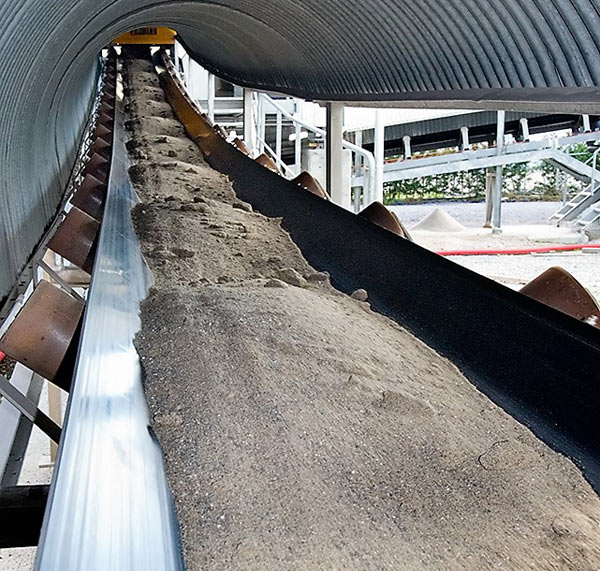
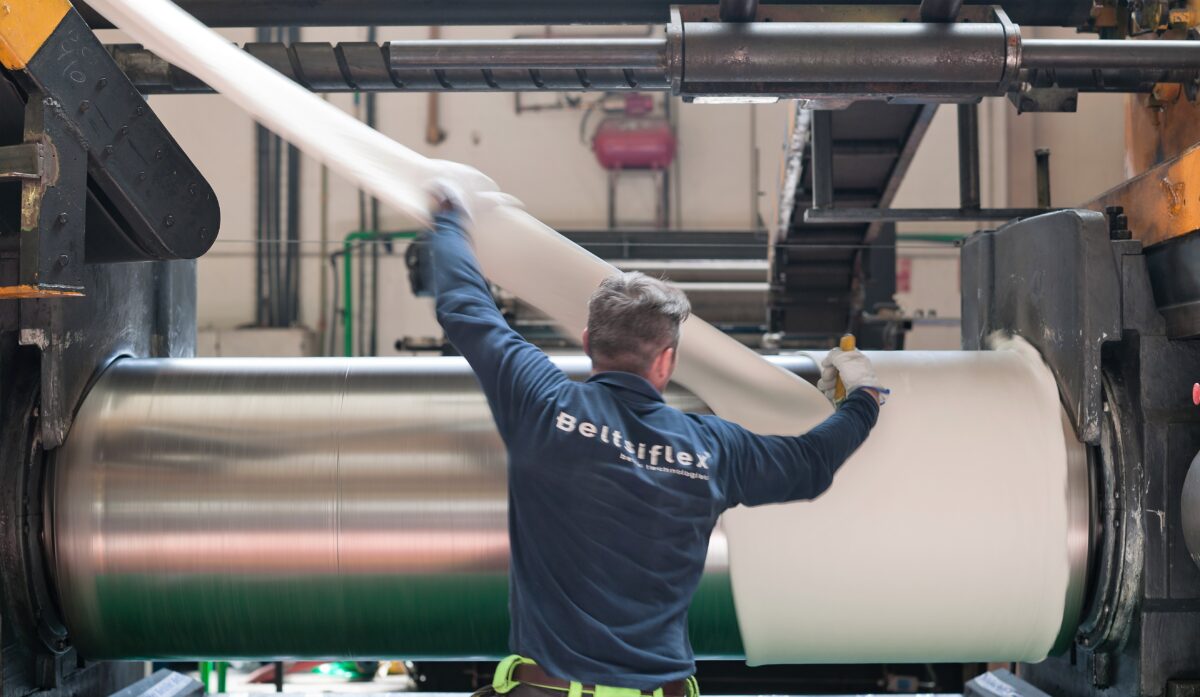
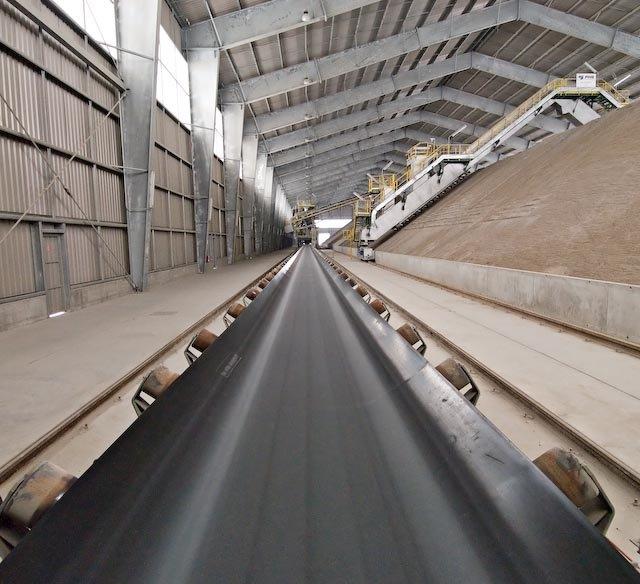
| Quality | Description | |
|---|---|---|
| Abrasion | Y | For material conveying in normal conditions |
| X | For conveying heavy materials with knocking and sharp edges | |
| W | For conveying hight abrasive materials | |
| RI | Anti impact, for heavy and bulky materials | |
| Heat resistant | RC130º | Resistant to material with medium temperatures, up to 130º |
| RC150º | Resistant to material with medium temperatures, up to 150Cº | |
| RC200º | Resistant to material with medium temperatures, up to 200Cº | |
| RC250º | Resistant to material with medium temperatures, up to 250Cº | |
| Oil and grease resistant | MOR | For materials with animal or vegetable oils |
| G | For materials with animal and mineral oils | |
| Flame resistant | K | For conveying materials with fire and explosion hazard |
| S | For materials with explosion hazard and in side mines | |
| Acid resistant | C | Resistant to materials with acid contents |
| Food | WF | White food quality |
| WFG | White food and oil resistant quality | |
| WFKG | White food, flame resistant and oil resistant quality | |
| GF | Green food | |
| BF | Blue food | |
DENOMINATION BELT
Belt identification is perfectly described in its denomination, where all its characteristics are defined.
800 EP500/4 4+2 Y
800 = Belt width in mm
EP500/4 = Type of carcass
EP = Synthetic fabrics called EP (polyester for the tensioning ply and nylon for the weave).
500 = Carcass breaking strength expressed in Newtons/mm.
/4 = Carcass manufactured with 4 EP fabrics
4 = Working face coat in mm.
2 = Conveying surface coat in mm.
Y = Rubber type and quality
